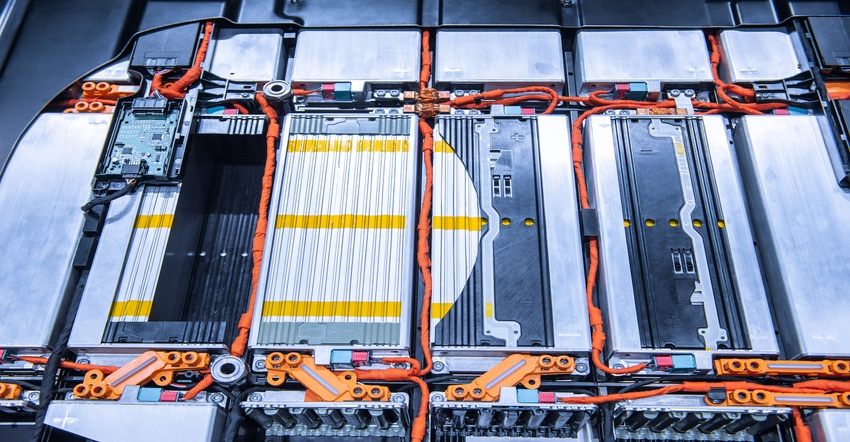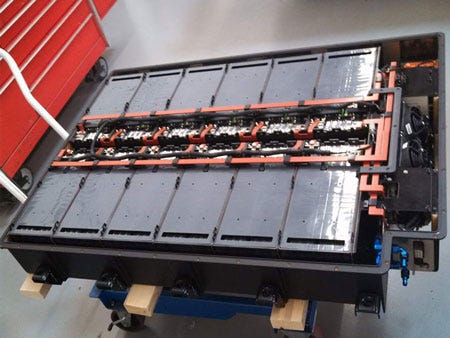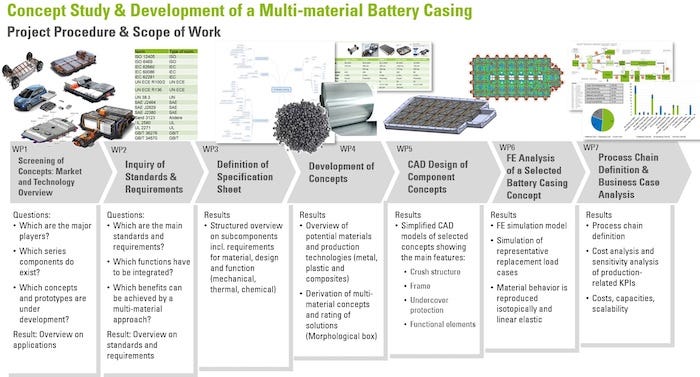How to Build a Better Composite Battery Enclosure
Composites are finding a growing role in electric vehicle battery enclosures, but product development can be a balancing act.
January 26, 2021

In the electric vehicle (EV) market, composites are used primarily as a strong but lightweight substitute for other materials. This makes sense as most of today’s EVs have a range from 250 to 400 miles (400 to 640 kilometers). While this range is more or less compatible with gasoline-powered vehicles, the number of battery-changing stations are far less than gasoline stations – although that is quickly changing.
Car manufacturers are increasingly using composites to reduce the weight of EVs and thus extend their range. But expanding the use of composite materials throughout the EV product development and manufacturing processes has a long way to go. Automotive manufactures still rely on the traditional supply chain of vehicle materials which is light on composites.
One of the growing applications for composites seems to be in the design and manufacture of EV battery enclosures. The very nature of such energy storage containers favors materials that have specific fire, thermal and electrical requirements for which composites are well suited. Further, the anisotropic behavior of composites when weaved together can provide torsional strength to the overall enclosure.
Even the shape of an enclosure can be more easily tailored to specific needs with the use of composites. A case in point is fiber-reinforced composite materials in which complex shapes can be created and strengthened with a careful layer of the material. This approach is opening opportunities for designers to create new and different enclosure shapes.
Trade-offs in Product Development
For example, an electric bus manufacturer needed a composite battery enclosure. The design had multiple criteria:
To support 900 lbs of batteries and electronics,
To sustain a 20G shock load,
To be watertight,
To surpass a salt spray corrosion test,
To prevent a road hazard from penetrating into the batteries,
To be a Class 1 fire retardant,
To be very lightweight (<80 lbs), and
To meet an aggressive cost target.
The design that met all of the requirements was provided by Performance Composites. According to the company website, one of the main challenges was meeting the enclosure's load specification while securing the batteries and components inside the structure. To meet these requirements meant that the enclosure had to be comprised of a hybrid sandwich construction consisting of biaxial fiberglass fabric, balsa core, and Kevlar fabric. A proprietary insert design was used at high load points.
Further, a vacuum infusion process (VIP) was needed for this enclosure as it enabled a very high fiber content (>65% by weight), which resulted in an enclosure with high strength and stiffness at minimum weight. Matched inner and outer molds were manufactured and then vacuum sealed. The molds allowed the designers to create Class A surfaces on all sides and control the tolerances of the key interfaces.
|
Battery enclosure design with composites. |
Product Development Questions
Another example of the increasing role of composites in EV battery enclosures comes from a recent announcement by Audi. As reported by Stephen Moore in Plastics Today, the Belgium-based EconCore recently entered into a partnership involving AZL, Audi, and others to establish the potential of using composites for battery housings. This eight-month collaborative project will assess the technical challenges, opportunities, and benefits of developing battery casings for electric vehicles using a variety of materials, including thermoplastics.
The project has been established by industry network group AZL, which specializes in composite-based lightweight technologies and seeks to drive innovation through the sharing of knowledge.
According to statista.com and marketsandmarkets.com, the global battery housing market for electric vehicles is projected to have an annual growth rate of over 13 percent across the next seven years. Most battery housings are almost entirely made from aluminum or steel. The industry membership group believes there is huge potential in this area to use lighter composite materials.
The first phase of this project will be focused on understanding what the potential opportunities and challenges are. For the EconCore team, this means pre-selecting thermoplastic materials, using different composite skin layers, and working through different geometrical design variants, to optimize the honeycomb material to obtain desirable characteristics and share findings with project partners.
Many of the questions and trade-offs from the study will prove useful for designers who are trying to use composite materials in the development of their products.
|
The study will generate requirements and purpose multi-material designs. |
John Blyler is a Design News senior editor, covering the electronics and advanced manufacturing spaces. With a BS in Engineering Physics and an MS in Electrical Engineering, he has years of hardware-software-network systems experience as an editor and engineer within the advanced manufacturing, IoT and semiconductor industries. John has co-authored books related to system engineering and electronics for IEEE, Wiley, and Elsevier.
About the Author(s)
You May Also Like







